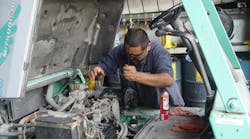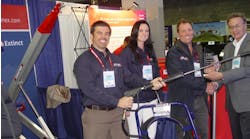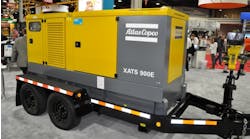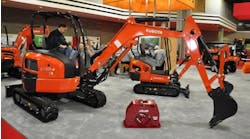Rental Revenue Will Continue to Grow Through 2019, IHS Predicts
The equipment rental industry’s rental revenue will increase 6.6 percent in 2016 and 5.6 percent in 2017 according to the latest forecast from the American Rental Association with data compiled by IHS Economics. The forecast reflects the downward shift of investment in energy markets and continued growth in residential and nonresidential construction. IHS’ predicted revenue totals have also been revised upwards to reflect the latest data released by the federal government from the 2012 U.S. Economic Census.
The industry’s new U.S. total revenue figures in 2009 through 2012 also impact the totals for 2013 through 2015 and the numbers forecast for 2016 through 2019. According to the released figures, total rental revenue, including construction/industrial, general tool/homeowner and party/special event, was $36.5 billion in 2012 compared to the previous estimate of $31.3 billion. The ARA’s forecast for 2016 is now $48.2 billion and up to $53.7 billion in 2019.
“Large revisions in the Economic Census are not uncommon since it is conducted once every five years and has a 100 percent sampling of U.S. companies,” said Scott Hazelton, managing director, IHS Economics. “The lack of frequency allows for changes in an industry to build up and the 100 percent sample is far more robust than any other government data project.”
The changes in total rental revenue in the United States, however, have not impacted expected growth rates forecast by IHS Economics. “The residential construction market is expanding and, in some markets, housing literally cannot be built fast enough and new home prices are rising,” added Hazelton. “Nonresidential construction also is growing strongly. Commercial construction growth will fall from double digits to high single digits, but remains fundamentally strong. The passage of the Highway Bill has improved the outlook for infrastructure-related spending for the first time since the stimulus package of 2009. These considerations bode well for construction/industrial and general tool rental.”
According to the association, rental penetration decreased slightly in 2015 from 53.9 percent in 2014 to 52.9 percent.
“Rental penetration is measured as the share of the U.S. construction equipment fleet accounted for by rental companies. Rental penetration will decrease if rental companies acquire fleet slower than contractor-owned equipment or if they divest fleet faster than contractors,” Hazelton said. “In the Great Recession, the latter was the case. In 2015, it is the former rationale that prevails. The story in 2015 was that construction markets were hot and energy markets were not. Equipment required for shale oil exploration was no longer in demand, yet much of this equipment was well-suited for construction. For a rental company that supplies to both industries, the solution was to defer some purchases of new equipment for construction sites and redeploy their existing assets from energy to construction.”
Hazelton added that fleets still grew in 2015, but at a slower rate, while investments by contractors remained unchanged. “The result is a mild dip in rental penetration that indicates the flexibility of the industry, not any weakness in the outlook,” he noted.








